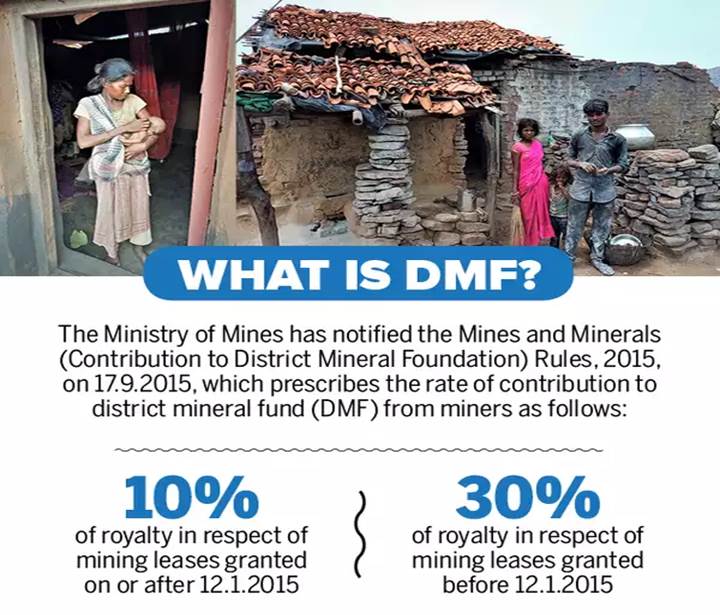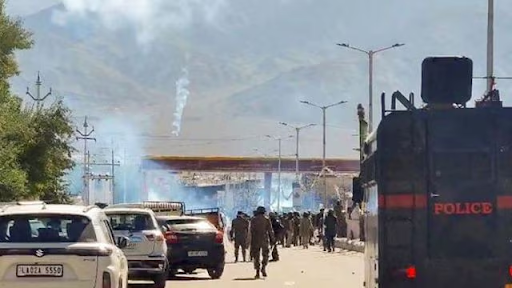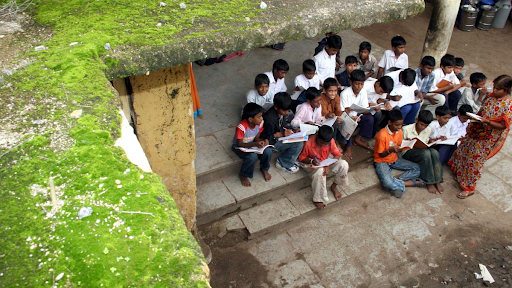Description

Copyright infringement not intended
In News
- Keonjhar district in Odisha is the highest recipient of funds in India under the District Mineral Foundation (DMF) scheme and has spent around ₹3,000 crores under the scheme over the past 7 years.
- Keonjhar district is hugely rich in mineral reserves, especially iron ore.
- The DMF fund is raised with the mining companies’ contribution of 30% of their royalty amount for mining leases.
- In Keonjhar, the total DMF fund collection is nearly ₹8,840 crore, the highest for any district in India.
- As per the Census of 2011, the district population has 44.5% Scheduled Tribes and 62% Scheduled Castes.
Background
- The lopsided equation of poverty and social benefits has failed some of India's richest mining districts for decades.
- Mining has benefited mining companies, individual miners and governments, not the communities living there.
- After years of deliberations and negotiations in 2015, the country's central mining law, the Mines and Minerals (Development and Regulation) Act (MMDR) of 1957 was amended and District Mineral Foundation (DMF) was instituted.
Pradhan Mantri Khanij Kshetra Kalyan Yojana (PMKKKY)
- In 2015, The Ministry of Mines launched the Pradhan Mantri Khanij Kshetra Kalyan Yojana (PMKKKY) for the welfare of areas and people affected by mining-related operations, by using the funds generated by District Mineral Foundations (DMFs).
- The concept of DMF was introduced through amendment in Mines & Minerals (Development & Regulation) MMDR Act, 1957.
- DMF is a non-profit body, established in all districts affected by mining-related operations to work for the interest and benefit of people and areas affected by mining.
- DMF has been established in 622 Districts spread across 23 States of India.
.jpg)
The overall objective of the PMKKKY scheme is;
- To implement various developmental and welfare projects/programs in mining-affected areas, and these projects/ programs will complement the existing ongoing schemes/projects of the State and Central Government.
- To minimize/mitigate the adverse impacts, during and after mining, on the environment, health and socio-economics of people in mining districts.
- To ensure long-term sustainable livelihoods for the affected people in mining areas.
Composition and functions of District Mineral Foundations (DMFs)
- The composition and Functions of the DMF are prescribed by the State Governments taking guidelines from Article 244 of the Indian Constitution, fifth and sixth schedules,
- Funds every mining leaseholder will pay a fraction of royalty, not exceeding one-third of the royalty, to the DMF as per rates prescribed by the Central Government.
- This fund will be used for the welfare of the people affected by the mining of selected areas.
- The Pradhan Mantri Khanij Kshetra Kalyan Yojana (PMKKKY) will be implemented by the DMFs of the respective districts using the funds accruing to the DMF.
Concerns
- The Centre also observed that states have been found transferring DMF funds to their treasury and consolidated funds, and even to the Chief Minister’s Relief Fund and other schemes.
- Ever since its establishment in 2015, the DMF has been portrayed as the saviour of communities’ tribals mostly that have benefitted little from mineral exploration and development in the regions they inhabit.
- Six years down the line, there are instances galore where DMF funds have gone to areas that have little or no bearing on the lives of the vulnerable population.
.jpg)
Way Forward
- The latest order by the Centre also echoes the same because putting huge financial resources to uses other than what they have mandated defeats the whole purpose of the DMF’s creation.
- Mineral development comes at a huge social and environmental cost, but communities living in these ore-bearing landscapes must be the principal beneficiary of the funds because they are the ones who bear the brunt but they aren’t benefited greatly.
https://epaper.thehindu.com/Home/ShareArticle?OrgId=GHTALASJC.1&imageview=0
https://t.me/+hJqMV1O0se03Njk9






.jpg)
.jpg)





